Xian Tours
Beijing Tours
China Tour Packages
About
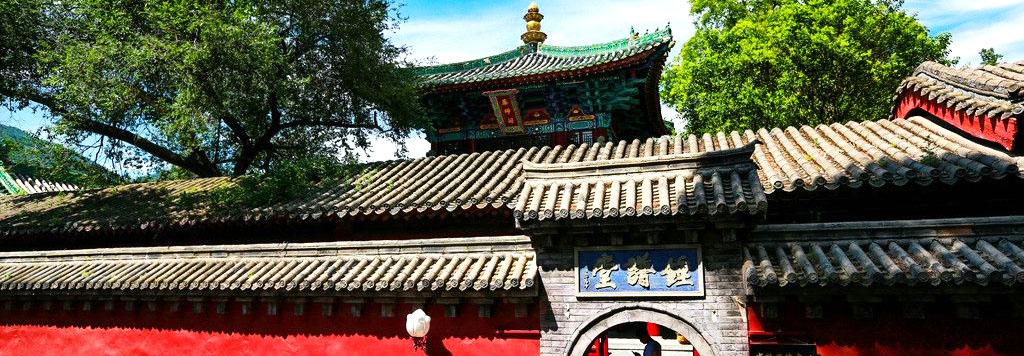
Brief Introduction
The Shaolin Monastery is the cradle of Chinese Buddhism and Chinese martial arts. 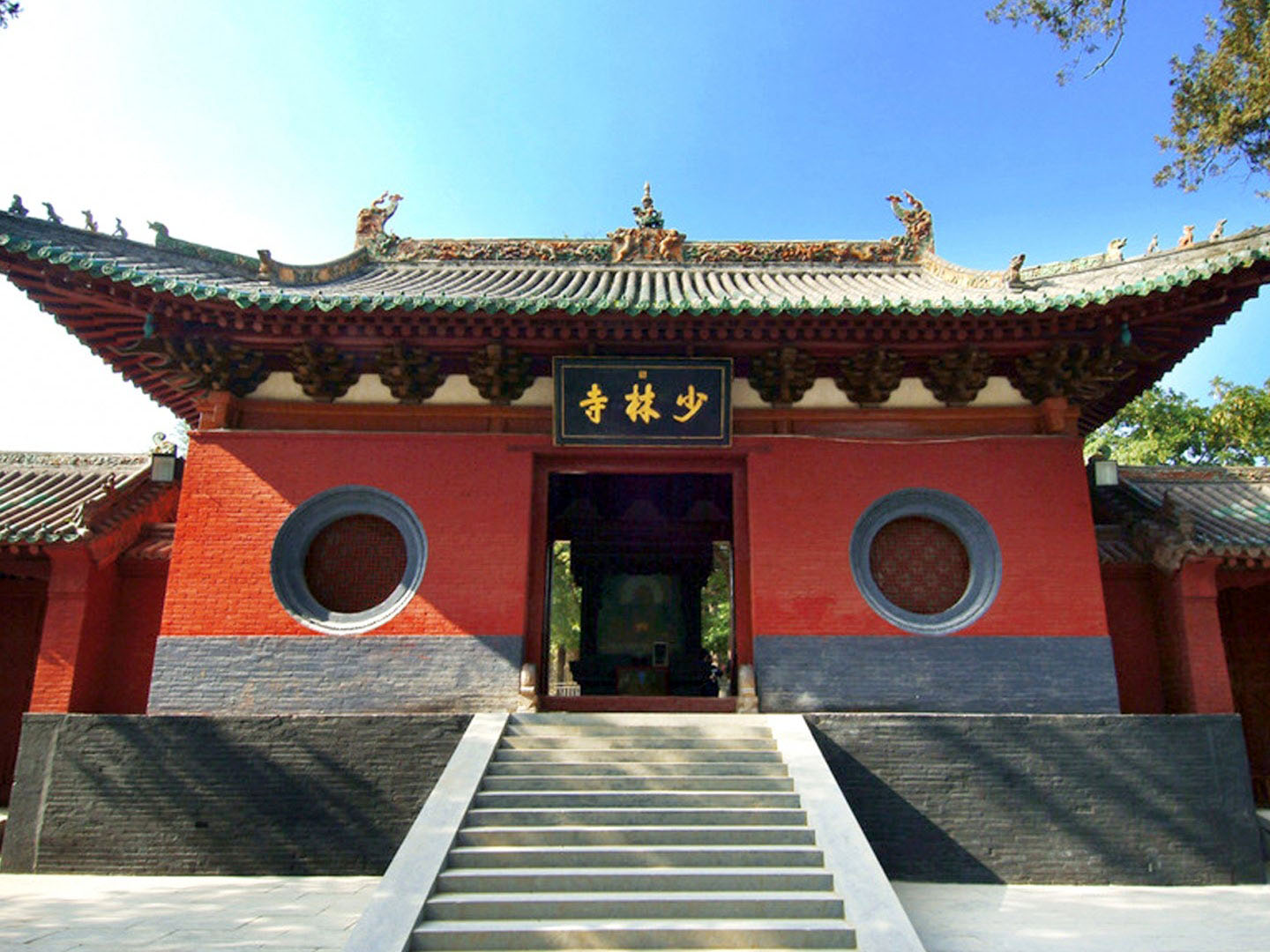 Situated in the verdant forest of Shaoshi peak inside Mt. Songshan, Dengfeng City the Shaolin Monastery was inscribed as UNESCO World Heritage Sites in 2010. The monastery was originally established by Emperor Xiaowen in the 19th year (495 A.D.) of Emperor Taihe in the Northern Wei Dynasty to accommodate the Indian master in another location in addition to the then capital city of Luoyang. The whole complex ranges about 57 600 sq meters, and its current abbot is Shi Yongxin. Besides spreading its significant influence in Buddhism, the Shaolin Monastery holds a prestigious reputation in martial art, especially Shaolin Kung Fu.
Situated in the verdant forest of Shaoshi peak inside Mt. Songshan, Dengfeng City the Shaolin Monastery was inscribed as UNESCO World Heritage Sites in 2010. The monastery was originally established by Emperor Xiaowen in the 19th year (495 A.D.) of Emperor Taihe in the Northern Wei Dynasty to accommodate the Indian master in another location in addition to the then capital city of Luoyang. The whole complex ranges about 57 600 sq meters, and its current abbot is Shi Yongxin. Besides spreading its significant influence in Buddhism, the Shaolin Monastery holds a prestigious reputation in martial art, especially Shaolin Kung Fu.
The Shaolin Monastery was first built in the Northern Wei Dynasty (495 A.D.) in the Shaoshi Peak of Mt. Songshan near Luoyang city by Emperor Xiaowen for the purpose of accommodating Indian monks to spread Buddhism. 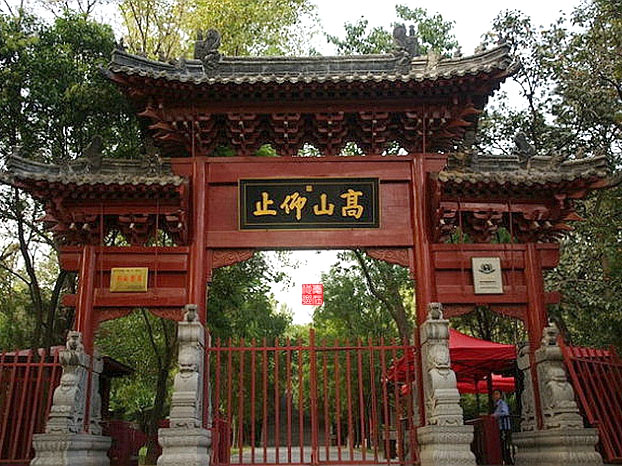 In 506, two Indian masters Ratnamati and Bodhiruci came to the monastery and established the Classics Translation Hall to translate foreign Buddhist Scriptures into the native language. In the third year (527 A.D) of Emperor Xiaoming, the twenty-eighth patriarch Bodhidharma travelled to the monastery, further recruited disciples, spread the Chan and shared his knowledge with Hui Ke in the Eastern Wei Dynasty, hereby circulating Chan in the Shaolin Monastery. By the time of the North and South Dynasties, Buddhism had reached its prime. It was prohibited during the rule of Emperor Wu in Northern Zhou Dynasty, hereby causing irreparable damage to the Shaolin Monastery.
In 506, two Indian masters Ratnamati and Bodhiruci came to the monastery and established the Classics Translation Hall to translate foreign Buddhist Scriptures into the native language. In the third year (527 A.D) of Emperor Xiaoming, the twenty-eighth patriarch Bodhidharma travelled to the monastery, further recruited disciples, spread the Chan and shared his knowledge with Hui Ke in the Eastern Wei Dynasty, hereby circulating Chan in the Shaolin Monastery. By the time of the North and South Dynasties, Buddhism had reached its prime. It was prohibited during the rule of Emperor Wu in Northern Zhou Dynasty, hereby causing irreparable damage to the Shaolin Monastery.
In the second year (580 A.D) of Daxiang in the Northern Zhou Dynasty, the Emperor Jiang restored the monastery and renamed it Zhihu Temple.
As an advocate of Buddhism, Emperor Wen in the Sui Dynasty restored the name of the Shaolin Monastery and bestowed more lands and other substantial gifts to enlarge the monastery.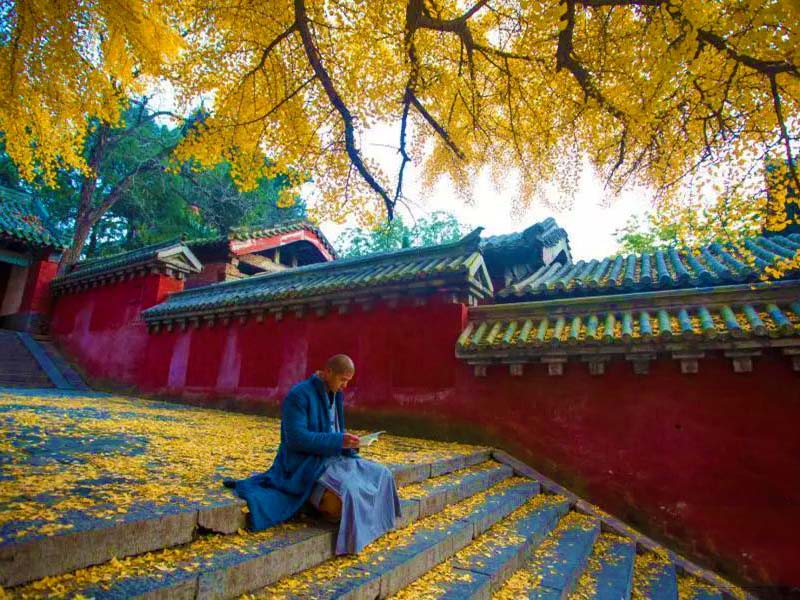
In the early Tang Dynasty, or more specifically the end of the Sui Dynasty, people were rebelling against Emperor Yang. Wang Shichong in Luoyang and Dou Jiande in Hebei Province cooperated with each other and posed a great threat to the newly-founded Tang Dynasty, leading the then-prince Li Shimin to lead troops to fight against them. At this critical moment, three monks from the Shaolin Monastery gave help and crushed the enemies. After ascending the throne, Li Shimin granted a large reward to the monastery, further enlarging its influence. By then, the Shaolin Monastery had already become famous.
During the Tang and Song Dynasties, the Shaolin Monastery possessed land of over 14,000 mu, temple foundations of 540 mu, about 5,000 halls, buildings and pavilions, and over 2,000 monks. Chan became the largest religion. In the Song Dynasty, the Shaolin Monastery continued to impose its impact on common people’s lives.
In the early Yuan Dynasty, Fu Yu was designated to take charge of the monastery and lead all the surrounding monasteries. During his reign, the Bell Tower and Drum Tower were built, and a collection of monks practiced martial arts here.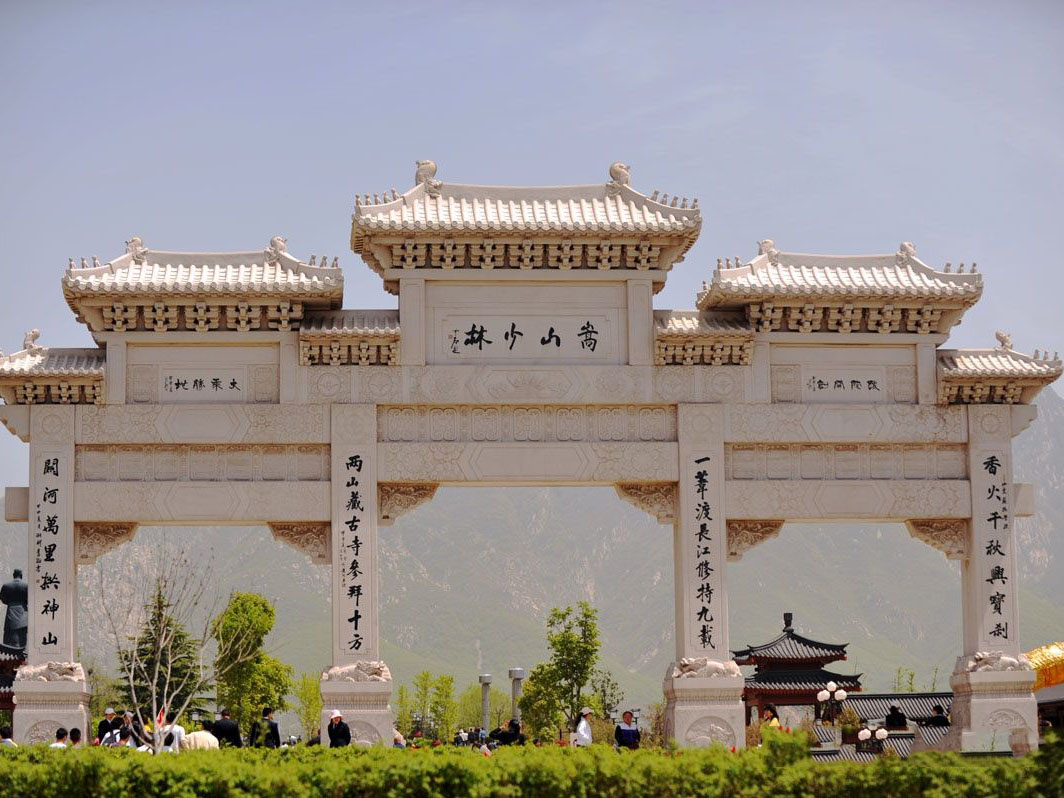
In the Jiajing period (1522-1566), the monastery monks made significant contributions to fighting against Japanese invaders, which granted the monastery some privileges including tax exemption. In later years, monks were called to fight for the government 6 times and won each time. The central government requested more halls and buildings to be erected for the monastery, thereby further strengthening the authority of Shaolin Kungfu in martial art.
In the 43rd year (1704) of Kangxi in the Qing Dynasty, the emperor personally wrote “少林寺(Shaolin Monastery)” and “宝树芳莲” on plaques for the monastery. The former plaque was originally hanging in the Hall of the Heavenly King and was later moved to the Mountain Gate. Whilst the latter one was hanging in the Main Hall, but was later destroyed by fire.
In the 13th year (1735) of Yongzheng’s rule, the Emperor personally reviewed the blueprint for the monastery and requested a reconstruction of the Mountain Gate and the Hall of Thousand Buddhas which cost a fortune.
In the 15th year of Qianlong’s rule, the emperor visited the monastery and stayed there, leaving plenty of poems and plaques.
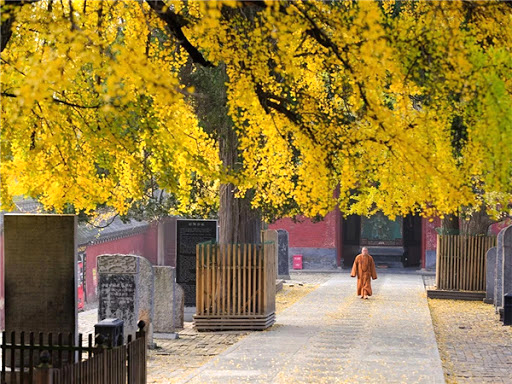
In the early period of the Republic of China, civil war broke out again and again between the revolutionists and the government, causing irreparable damage to the monastery. In 1912, one monk named Heng Lin was promoted to a head position and he organized a substantial security group to fight the bullies. In 1920, Heng Lin led the security group to defeat the bandits around the monasteries, earning himself the reputation of Live Buddhist of Shaolin.
After the founding the new China, especially following the new religion policy of the 1980s, the Shaolin Monastery spread its unique traditions and restored the halls destroyed in the Cultural Revolution. Many valuable inscriptions, buildings, antiques, and steles were renovated. In 2010, the Shaolin Monastery was listed in the UNESCO World Heritage. The monastery also offers several Kungfu Shows everyday performed by real monks.
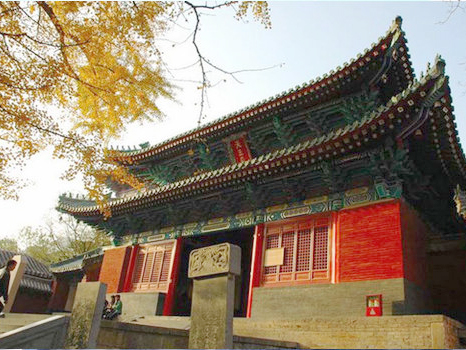
The main compound sits on the north bank of the Shaoxi River in Dengfeng, Henan Province. With an area of 57,600sq meters, the whole monastery is composed of seven yards, the Frequently Accommodated Buildings, Pagoda Forests and Ancestor’s Monasteries. From south to north of the Frequently Accommodated Buildings, Shanmen Hall comes first, following it are the Hall of Heavenly Kings, the Mahavira Hall (Daxiongbaodian), Classics Attic etc.. To the west, there is the Pagoda Forest.
This is the very gate to access the monastery, it was built in Emperor Yongzheng’s reign in 1735 and restored in 1974. 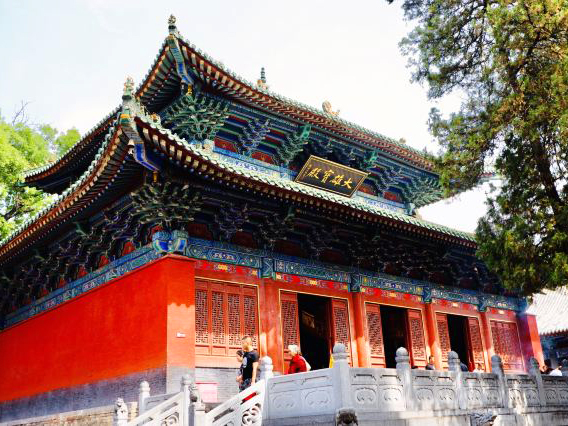 Three big characters “少林寺” written by Emperor Kangxi in the Qing Dynasty are still clearly visible on the top. Sitting on either side are two stone lions that were carved in the Qing Dynasty.
Three big characters “少林寺” written by Emperor Kangxi in the Qing Dynasty are still clearly visible on the top. Sitting on either side are two stone lions that were carved in the Qing Dynasty.
Passing the Shanmen Hall, you will encounter the corridor, which is next to the Steles Forest. There are about 100 steles dated to different times from the Tang Dynasty to the Qing Dynasty on the east side of the aisle. On the west side of the Steles Forest, you will find the complex for clay sculptures and wood carvings.
Following the Steles Forest, you will come across the Hall of Heavenly Kings. 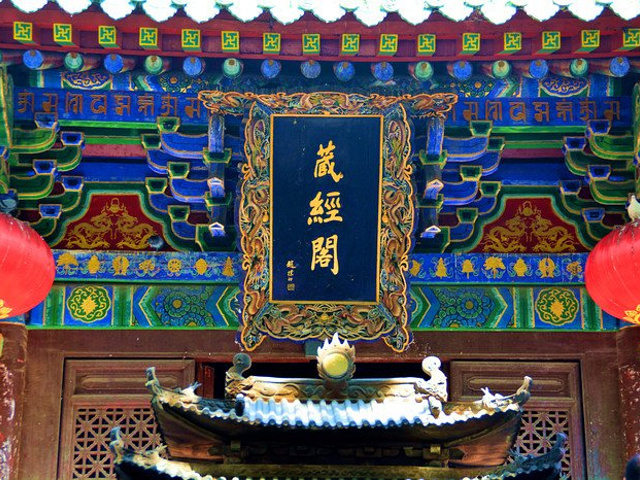 Featuring red walls, and green tiles with painted columns. The Hall of Heavenly Kings gained its name from the fact that it hosts four heavenly kings bringing good luck to people. Inside the hall, you will find two statues protecting the kings.
Featuring red walls, and green tiles with painted columns. The Hall of Heavenly Kings gained its name from the fact that it hosts four heavenly kings bringing good luck to people. Inside the hall, you will find two statues protecting the kings.
Situated behind the Hall of Heavenly Kings, Mahavira Hall is the key site to host all kinds of events. Together with Hall of Heavenly Kings and Classics Attic, these three places formed the most important Buddhist Halls.
Situated at the back of the Mahavira Hall, the Scripture Room was built 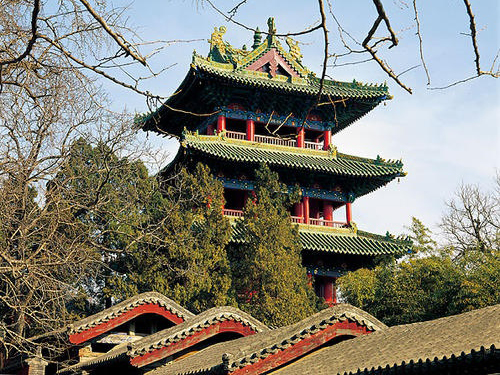 in the Ming Dynasty and was destroyed in 1928. In 1994, it was repaired again. As a site for monks to store their scriptures and preach, the Scripture Room is a comprehensive complex integrating a kitchen, living rooms, preaching rooms, and meditation rooms.
in the Ming Dynasty and was destroyed in 1928. In 1994, it was repaired again. As a site for monks to store their scriptures and preach, the Scripture Room is a comprehensive complex integrating a kitchen, living rooms, preaching rooms, and meditation rooms.
Beside the Mahavira Hall, there are the Bell Tower and Drum Tower. Both of them are delicately built in four floors. A bell sound in the morning and a drum sound in the evening is a sign for monks to do their routine daily work. In front of the Bell Tower stands a stele inscribed with the legend of thirteen monks’ helping to save the then-Prince Qin, later Emperor Taizong Li Shimin in the Tang Dynasty.
Built in the Ming Dynasty and rebuilt in 1980, it was said that this was the very 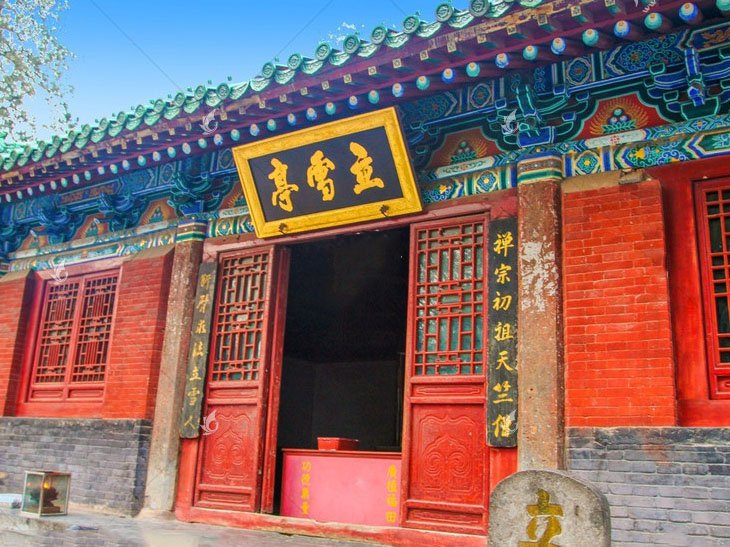 spot where Second Ancestor Huike learned the Buddha dharma by breaking his arms from Damo. It is a place for monks to carry out daily Buddhist traditions now.
spot where Second Ancestor Huike learned the Buddha dharma by breaking his arms from Damo. It is a place for monks to carry out daily Buddhist traditions now.
Seated behind the Bodhidharma Bower, this is the last big hall inside the Monastery. The wall paintings on the back and east and west walls are very precious. You will see the most prestigious paintings that represent the highest level of frescoes from the Tang Dynasty.
This was the abbot’s living room where he dealt with all kinds of matters 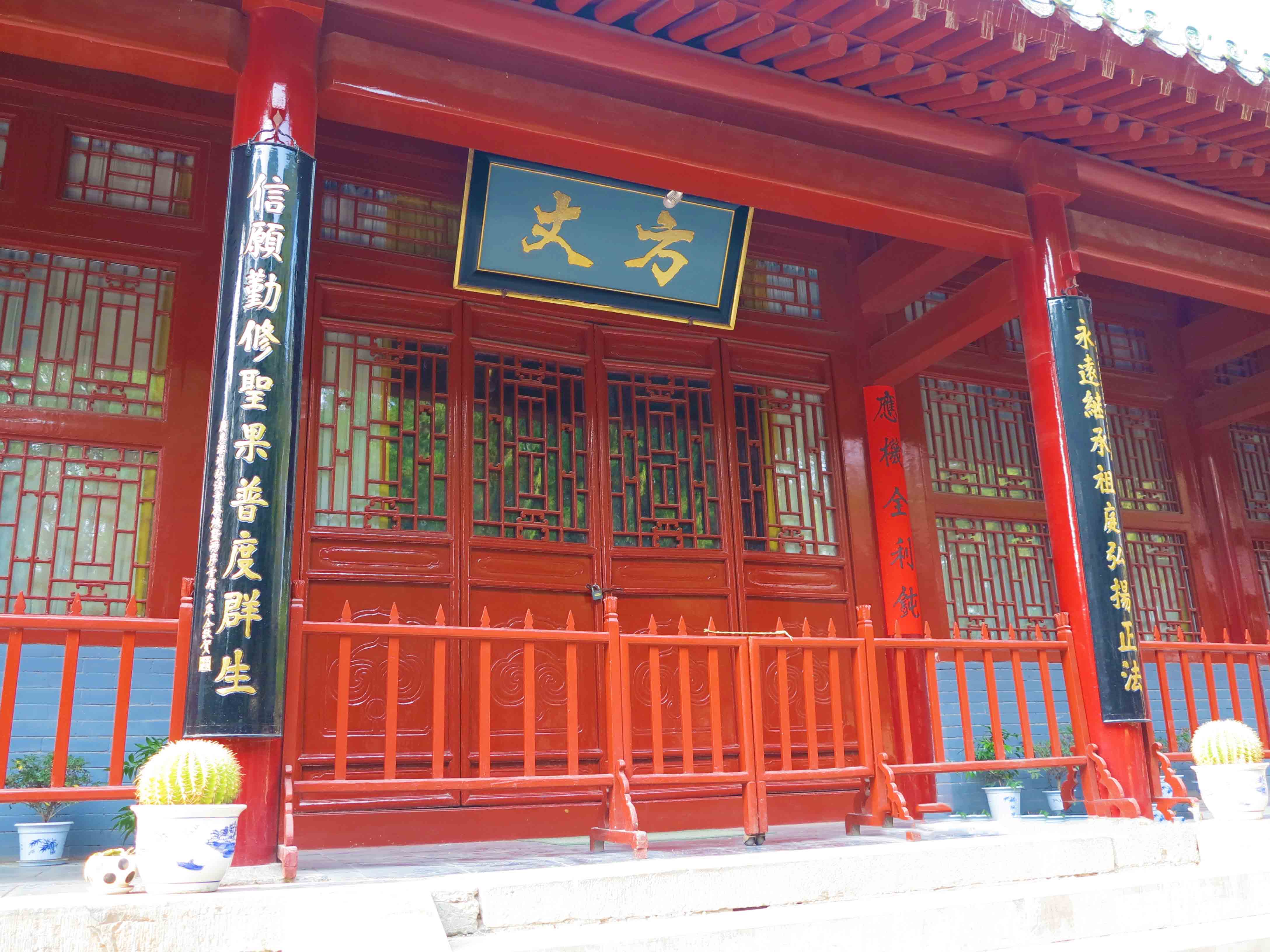 brought before him. Emperor Hongli in the Qing Dynasty (in 1750) lived with him when he traveled to Luoyang, which entitled the room to be called “Dragon’s Room.”
brought before him. Emperor Hongli in the Qing Dynasty (in 1750) lived with him when he traveled to Luoyang, which entitled the room to be called “Dragon’s Room.”
The Forest of Pagodas is located about 300 meters west of the monastery, and is a collection of 231 pagodas from the Tang, Song, Jin, Yuan, Ming and Qing Dynasties and modern times. This is a cemetery where all the famous monks were laid to rest. Due to the variety of pagodas and their informal shapes and heights, people call it the Forest of Pagodas.
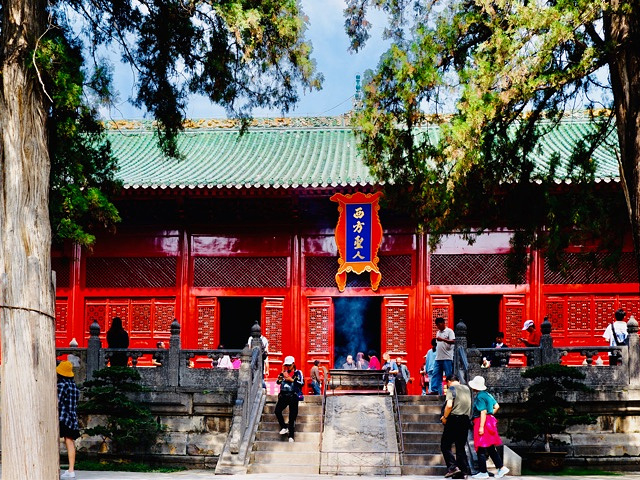 Inside the cave, you will see three sculptures, Da Mo in the middle and his two disciples at his sides.
Inside the cave, you will see three sculptures, Da Mo in the middle and his two disciples at his sides.
Entrance fee with one way shuttle bus: 95 RMB pp;
Entrance fee with round way shuttle bus: 105 RMB pp;
Peak Seasons: March - November: 07:30 - 18:00;
Low Seasons: December - February: 08:00 - 17:30.
1.Starting from Zhengzhou:
I: Go to the Zhengzhou Center Train Station and take the bus from the Municipal Long-distance Bus Terminal sitting opposite the train station, get off in Dengfeng City. Change busses to go from Dengfeng to the Shaolin Temple.II: Take special bus heading to Dengfeng from the Municipal Long-distance Bus Terminal. You won’t have to change busses.
2. Starting from Luoyang
In the east of Luoyang Central Station, you will find the Luoyang Bus Terminal. There are multiple buses back and forth to the Shaolin Monastery.
3 Days Xian -Luoyang Tour 5 Days Xian & Luoyang Heritage Tour
Copyright © 2019 Lily Sun China Tours International, Inc. Terms &conditions | Privacy Policy | Sitemap